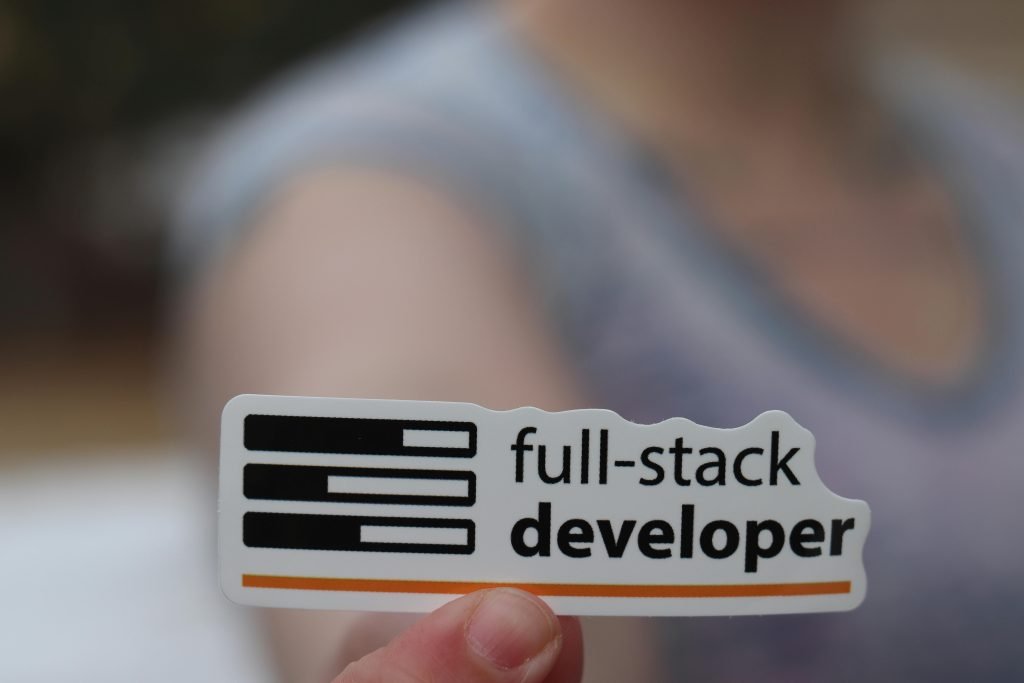
Unraveling the Power of Full-Stack Development: A Comprehensive Guide
In the dynamic landscape of web development, the role of full-stack developers has become increasingly indispensable. With the ever-growing demand for versatile professionals who can seamlessly navigate both the frontend and backend realms of software development, mastering the art of full-stack development has emerged as a rewarding career choice. In this comprehensive guide, we delve deep into the intricacies of full-stack development, exploring its significance, key components, best practices, and the pathway to becoming a proficient full-stack developer.
Understanding Full-Stack Development

Full-stack development refers to the practice of proficiently working on both the frontend and backend aspects of web application development. A full-stack developer possesses a diverse skill set, encompassing expertise in various programming languages, frameworks, databases, and server management. This holistic approach enables them to single-handedly handle the entire development process, from conceptualization and design to deployment and maintenance.
For more tips on Full-Stack Development, please visit our site.
The Components of Full-Stack Development:
Frontend Development:
- Frontend development focuses on crafting the user-facing interface of web applications. Key technologies and tools commonly utilized in frontend development include HTML, CSS, JavaScript, and popular frameworks such as React.js, Angular, and Vue.js. Attention to user experience (UX) design principles and responsiveness across different devices is paramount in frontend development.
Backend Development:
- Backend development involves building the server-side logic and database management systems required to power web applications. Commonly used programming languages for backend development include JavaScript (Node.js), Python (Django, Flask), Ruby (Ruby on Rails), and Java (Spring Boot). Understanding concepts like RESTful APIs, database management, authentication, and server deployment is crucial for backend development.
Database Management:
- A fundamental aspect of full-stack development is proficient database management. Developers must be adept at designing, querying, and optimizing databases to ensure efficient data storage and retrieval. Popular databases utilized in full-stack development include MySQL, PostgreSQL, MongoDB, and Firebase.
Version Control Systems:
- Full-stack developers rely on version control systems such as Git to track changes in their codebase, collaborate with team members, and seamlessly manage project repositories. Understanding Git workflows and branching strategies is essential for effective collaboration and project management.
Best Practices in Full-Stack Development
Modular and Scalable Architecture:
- Adopting a modular and scalable architecture facilitates code reusability, maintainability, and flexibility in full-stack development projects. Implementing design patterns like MVC (Model-View-Controller) or MVVM (Model-View-ViewModel) helps in organizing code structure and separating concerns.
Security Measures:
- Prioritizing security measures is imperative to safeguard web applications against potential threats and vulnerabilities. Full-stack developers should implement best practices such as input validation, authentication mechanisms, encryption, and regular security audits to mitigate security risks effectively.
Continuous Integration and Deployment (CI/CD):
- Leveraging CI/CD pipelines automates the process of code integration, testing, and deployment, streamlining the development workflow. By embracing CI/CD practices, full-stack developers can ensure faster time-to-market, improved code quality, and enhanced collaboration within development teams.
Performance Optimization:
- Optimizing the performance of web applications is essential to deliver a seamless user experience. Full-stack developers should employ techniques like code minification, caching strategies, lazy loading, and optimizing database queries to enhance application performance and scalability.
Becoming a Proficient Full-Stack Developer
Mastering Fundamentals:
- Begin by mastering the fundamentals of frontend and backend development, including HTML, CSS, JavaScript, and a backend programming language of choice. Invest time in understanding core concepts such as data structures, algorithms, and web protocols.
Hands-On Experience:
- Gain practical experience by working on real-world projects and building full-stack applications from scratch. Engage in open-source contributions, collaborate with peers, and participate in hackathons to broaden your skill set and problem-solving abilities.
Advantages of Full-Stack Development

In today’s fast-paced digital landscape, the demand for versatile and skilled developers continues to soar. Full-stack development, the practice of working on both the frontend and backend aspects of web applications, has emerged as a pivotal skill set coveted by tech companies worldwide. Let’s delve into the myriad advantages that full-stack development brings to the table:
1. Versatility and Flexibility:
Full-stack developers possess a diverse skill set, allowing them to seamlessly transition between frontend and backend development tasks. This versatility enables them to take on various roles within a development team and adapt to evolving project requirements with ease.
2. End-to-End Project Understanding:
By having proficiency in both frontend and backend development, full-stack developers gain a comprehensive understanding of the entire development process. They can conceptualize, design, implement, and deploy web applications independently, leading to smoother project execution and better collaboration with team members.
3. Cost-Efficiency for Startups and Small Businesses:
For startups and small businesses with limited resources, hiring full-stack developers can be a cost-effective solution. Instead of assembling separate teams for frontend and backend development, they can leverage the expertise of full-stack developers to handle all aspects of web application development.
4. Rapid Prototyping and Iteration:
Full-stack developers excel in rapid prototyping and iteration, thanks to their ability to quickly implement both frontend and backend functionalities. This agility allows for faster feedback cycles, enabling teams to iterate on features, gather user feedback, and refine the product iteratively.
5. Seamless Communication and Collaboration:
In cross-functional development teams, full-stack developers serve as effective mediators between frontend and backend specialists. Their ability to understand and communicate with both sides fosters seamless collaboration, reduces misunderstandings, and accelerates project delivery.
6. Enhanced Problem-Solving Abilities:
Full-stack developers are adept at tackling complex technical challenges spanning the entire stack. Their holistic approach to problem-solving enables them to identify issues at different layers of the application and devise efficient solutions that consider both frontend and backend considerations.
7. Adaptability to Emerging Technologies:
The technology landscape is constantly evolving, with new frameworks, libraries, and tools emerging regularly. Full-stack developers, with their broad skill set and continuous learning mindset, are well-equipped to adapt to these changes and embrace emerging technologies seamlessly.
8. Career Advancement Opportunities:

Mastering full-stack development opens up a world of career advancement opportunities. Whether as a freelance developer, technical lead, or startup founder, full-stack developers are in high demand across various industries and can command competitive salaries and roles with greater responsibilities.
Continuous Learning:
- Stay abreast of emerging technologies, frameworks, and best practices in full-stack development through continuous learning. Explore online resources, attend workshops, and enroll in relevant courses or bootcamps to expand your knowledge and stay updated with industry trends.
Building a Portfolio:
- Showcase your expertise and proficiency by building a diverse portfolio showcasing your full-stack development projects. Highlight your problem-solving approach, design aesthetics, and technical prowess to prospective employers or clients.
Conclusion:
Full-stack development offers a holistic approach to web application development, empowering developers to navigate both frontend and backend realms with proficiency seamlessly. By mastering the key components, adopting best practices, and continually honing their skills, aspiring developers can embark on a rewarding journey toward becoming proficient full-stack developers. Embrace the challenges, stay curious, and never cease to explore the boundless possibilities of full-stack development.











